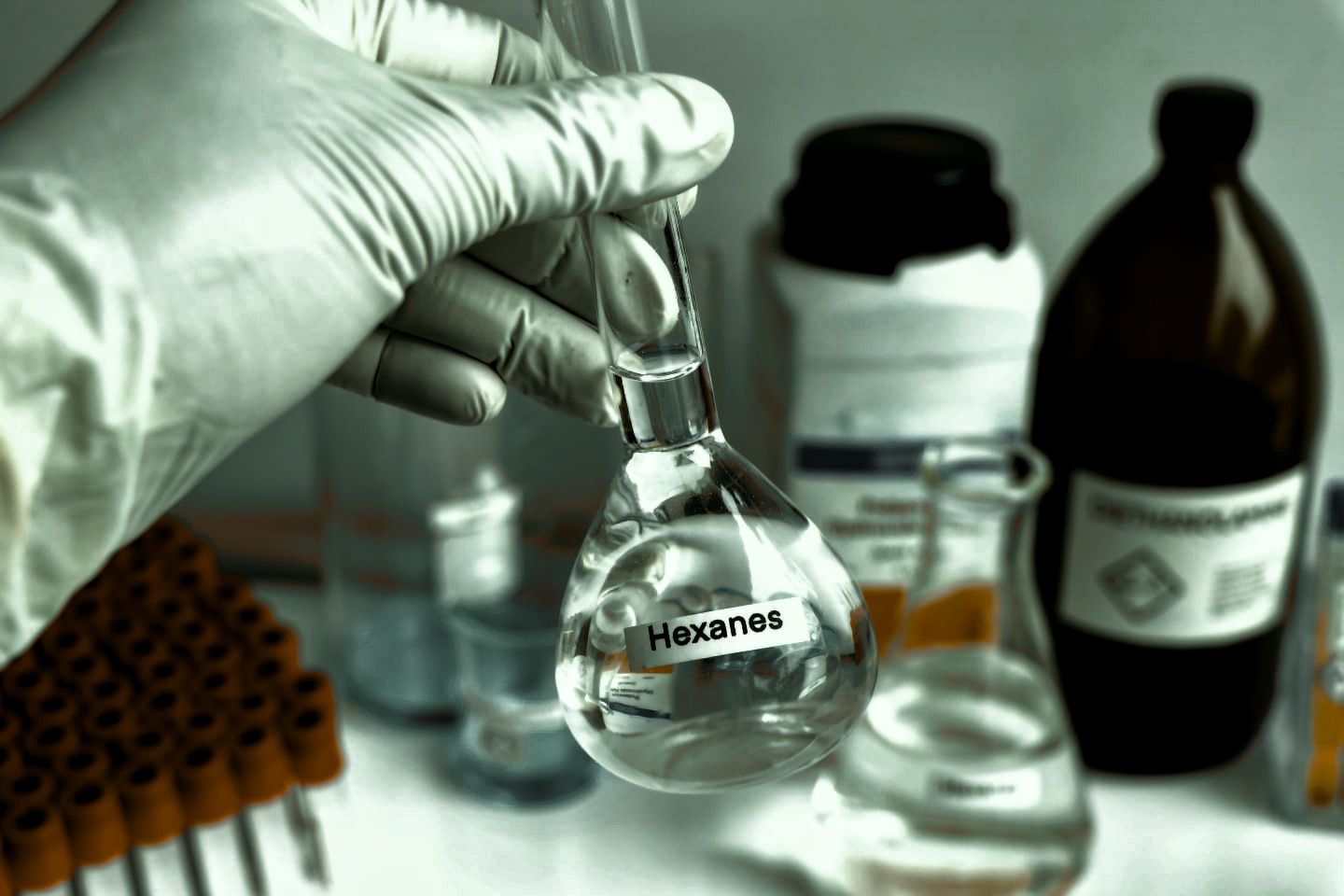-
CAS110-54-3
-
Structural formula
C₆H₁₄
Remove n-hexane from the exhaust air
What is n-hexane?
n-hexane is a colourless, volatile and highly flammable liquid hydrocarbon. It belongs to the group of alkanes and is used in industry as a solvent, particularly in the production of adhesives, leather and textiles, as well as in chemical extraction. n-hexane is known for its good solubility of fats and oils and plays an important role in various industrial processes.
Origin
n-hexane is mainly obtained by refining crude oil and is used in various industrial processes. It is used as a solvent in the chemical industry, in the production of adhesives and sealants and in the extraction of vegetable oils. In addition, n-hexane is a component of petrol.
Recognition
n-Hexane is a colourless liquid with a slightly sweet, petrol-like odour. It can irritate the skin and eyes and its vapours can cause headaches, dizziness and drowsiness. Due to its volatile nature, n-hexane can easily evaporate and form flammable vapours.
Limit values
In Germany, the limit values for n-hexane are regulated by the Technical Instructions on Air Quality Control (TA-Luft) and the Occupational Exposure Limit Values (OEL). The OEL for n-hexane is 50 ppm (parts per million) or 180 mg/m³. These limit values are intended to ensure that the concentrations in the workplace do not cause any damage to health.
Hazards
Health: High concentrations of n-hexane can cause respiratory irritation, dizziness, headaches and drowsiness. Long-term exposure can damage the nervous system and lead to neuropathies. If swallowed, there is a risk of poisoning, which can cause nausea and vomiting. Environment: n-Hexane is poorly biodegradable and can contaminate water and soil in high concentrations, which can damage flora and fauna. It can disturb the ecological balance. Economic damage: Improper handling of n-hexane harbours the risk of explosion and fire, which can lead to considerable material damage and production losses. High insurance costs and legal consequences are also possible risks.
The oxytec Purification Technology
For many organic pollutants, we offer energy-saving and clean technologies for neutralisation, which we combine in multi-stage plants. In order to achieve a reduction below the limit values, not only the dimensioning of the respective purification stage but also the sequence of the technologies is decisive, as they have different physical effects on the molecules. Below we present some of our purification modules.
CWA
Alternative technologies
In addition to our solutions, there are other technologies such as conventional activated carbon filters and simple ventilation systems. However, these often have disadvantages such as high energy consumption, limited cleaning performance, large space requirements, long lead times and high investment costs.
Advantages of the oxytec solution
- Compact design: Small footprint compared to traditional systems.
- Low operating costs, therefore rapid amortisation
- Environmentally friendly: Minimal environmental impact thanks to innovative technologies
- Efficient n-hexane reduction: High efficiency thanks to high purification levels with minimal energy consumption.
